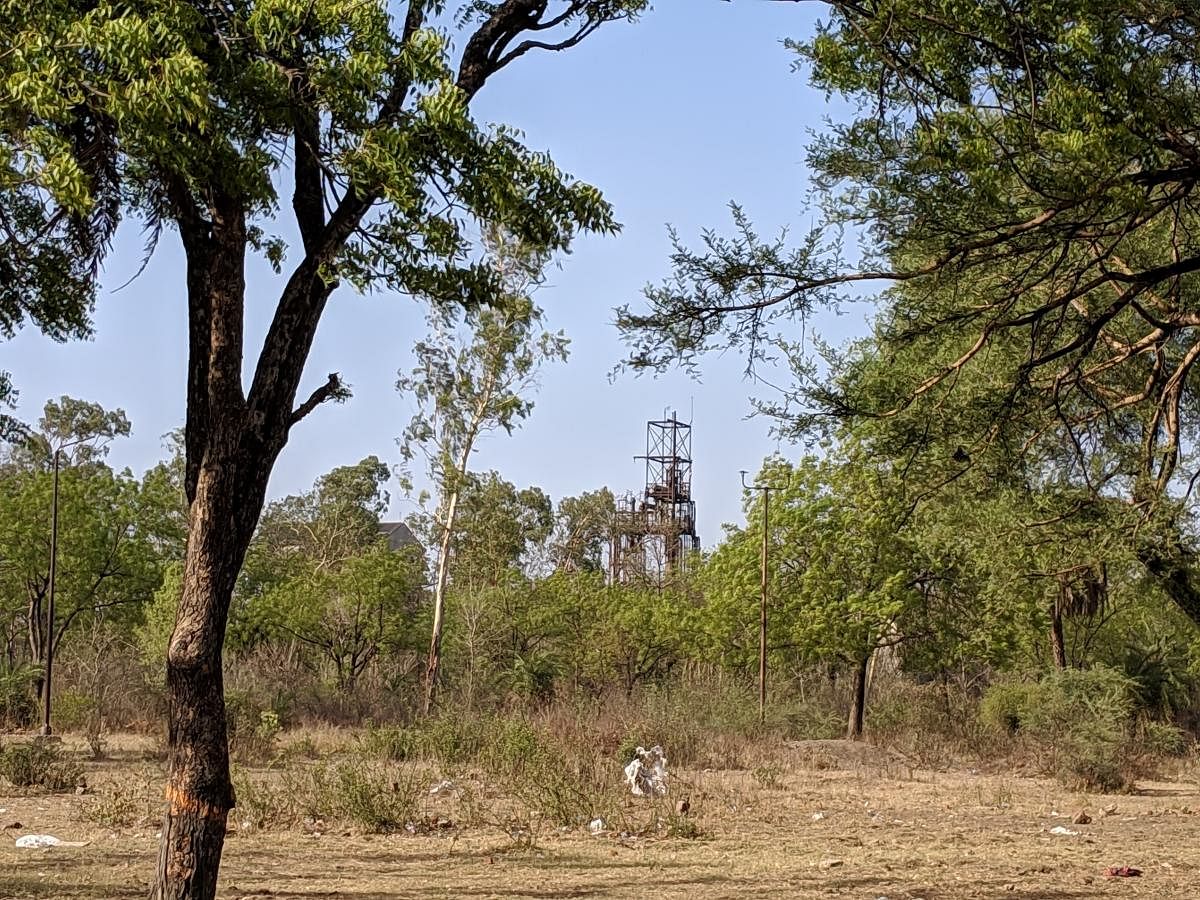
From outside, it looks no worse than any other abandoned industrial compound in the country. In fact, its walls are brightened up by murals proclaiming the glories of Clean Bhopal. Through a hole in the wall, you can even catch a game of cricket played by the local urchins.
But in the distance, sticking out amid the overgrowth, stand chemical reactors and a tower of rectangular metal frames. Snakes and scorpions are said to lurk in the factory, seeking shelter from the 40-degree heat. Ruined buildings – one a campus hospital – are nearby.
Welcome to the Union Carbide plant in Bhopal, which killed nearly 4,000 people in the vicinity when it spewed poisonous methyl isocyanate gas into the chilly night air 35 years ago this December. It’s estimated that between 16,000 and 25,000 people have died as a result of the exposure over the years. The gas had escaped from a valve at the top of the frame-like structure.
But not far away, a carnival-like atmosphere prevails. On Sunday, the city will vote to elect its member of parliament, a compelling tussle between a BJP candidate accused of terror attacks, Sadhvi Pragya, and a two-time chief minister, Digvijaya Singh. Pragya’s people organise high-voltage roadshows and Digvijaya goes around in his SUV meeting potential constituents.
But this chapter of the world’s largest election has yet to meet the world’s worst industrial tragedy.
“In any house nearby, you will find one person confined to bed, if not more. 6,00,000 people were exposed, and 1,50,000 are still suffering chronic conditions. Nobody gives a damn,” says Satinath Sarangi, an activist who came to Bhopal to help out a day after the disaster in 1984, and has stayed back ever since.
Indeed, the ugly, rusted structure is an awkward reminder of justice not fully done, though some compensation has been paid out. There is contaminated waste, for instance, that has yet to be dealt with.
“During my time as CM we took special care. I have many friends among the gas victims,” says Digvijaya. “The disposal of waste can be taken care of now because it is no longer dangerous. We will build a memorial.”
But Sarangi says the BJP and the Congress are no longer interested in the gas victims. He suggests that one reason for the BJP’s indifference is that half of the victims are Muslims, and among the Hindus, most are low-caste. Old Bhopal, where the plant operated, is a poorer part of town.
“Digvijaya as CM had once planned the closure of the Bhopal gas disaster department, which runs hospitals that offer free treatment. Data was manipulated to show that death rates were normal. They are in fact 28% higher than the average,” says Sarangi.
Prime Minister Narendra Modi has mentioned the tragedy in speeches to score points over Congress, because it happened on Rajiv Gandhi’s watch. Otherwise, it does not seem to be on the BJP’s radar this election.
Six of the 12 persistent organic pollutants (POPs) listed by an international treaty on the subject are found in the Bhopal ground water. And incidences of lung disorders, paralysis, heart disease and reproductive problems persist. Many patients have been treated with painkillers for years, leading to kidney disease. Birth defects in the next generation are several times the average.
Abdul Jabbar, another relentless champion of victims’ rights, says successive governments at the Centre and Madhya Pradesh have done precious little to address the victims’ problems.
“The battle is far from over,” he says.
In 12 days, the country will likely know which party will rule at the Centre, and which has won Bhopal. For the gas victims, who have seen several PMs and CMs come and go, this could be just one more disappointing result.
